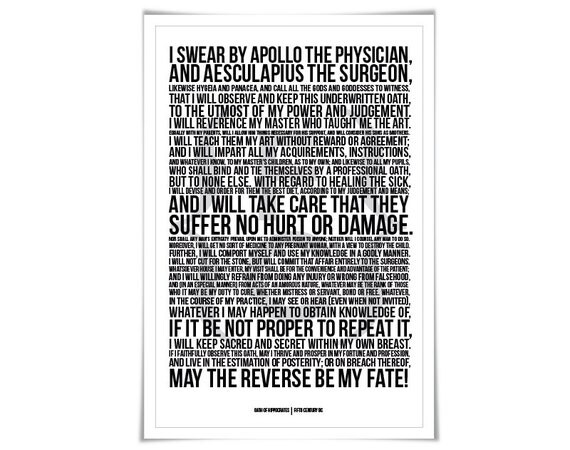| When MedTech Meets Art Diffusion Tensor Imaging, a more colorful view of the white matter in the brain |
 |
| The original Hippocratic Oath, first seen in Greek medical texts. The modern oath was written in 1964 by Louis Lasagna, Academic Dean of the School of Medicine at Tufts University. |
| The Reincarnation of Saint-Orlan, an art project in which artist Orlan underwent a series of surgeries to incorporate aspects of famous paintings/sculptures onto her face http://www.looklateral.com/en/artist/orlan/
Through cosmetic plastic surgery, people can now transform themselves into a work of art. We see this through Orlan's plastic surgery art project, where she went under the knife to have the chin of Botticelli’s Venus, the nose of Jean-Léon Gérôme's Psyche, the lips of François Boucher’s Europa, the eyes of Diana, and the forehead of Leonardo da Vinci’s Mona Lisa. Orlan may be an extreme case, but her work clearly demonstrates how medical technology can be analogous to an artist's tools, sculpting and sketching to create something completely new, different, and even cringe-worthy. Additionally, Orlan's project can also be used as a talking point about our society's standards of beauty. I use the phrase "work of art" loosely, for our standards of beauty always change. Thus, while we have the technology to do so, to pursue beauty in the ways greater society defines it will always leave people disappointed.
Sources
Casini, Silvia. “Magnetic Resonance Imaging (MRI) as Mirror and Portrait: MRI Configurations Between Science and Arts.” Web.
Lawrence, Hannah. "This Med Student Makes His Own Comics To Help Him Study." BuzzFeed. Buzzfeed. Web.
Oriach, Stephan. "Orlan--Carnal Art." Documentary. YouTube.
Tyson, Peter. “The Hippocratic Oath Today.” PBS. PBS. Web.
Vesna, Victoria. "Medicine pt. 2" Lecture. Web.
Vesna, Victoria. "Medicine pt. 3." Lecture. Web.
|
No comments:
Post a Comment